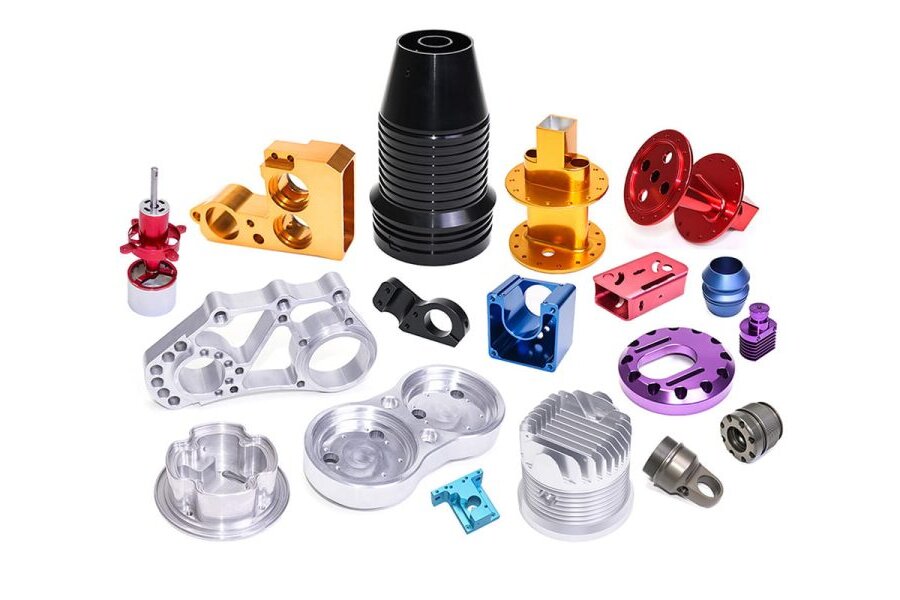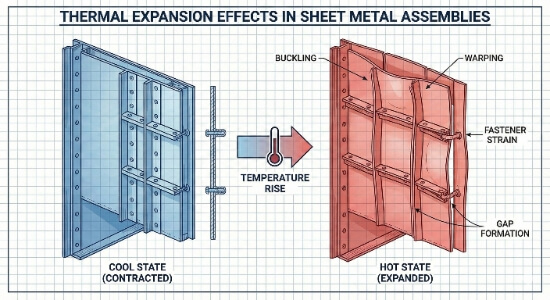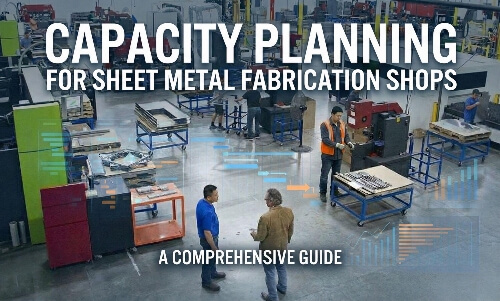El aluminio se utiliza habitualmente en muchas industrias porque es ligero y flexible. Pero, ¿qué ocurre cuando el aluminio se somete a un proceso de anodizado? Este proceso mejora sus cualidades, haciéndolo más resistente y visualmente más atractivo. Tanto si se dedica a la fabricación como a la construcción o el diseño, el aluminio anodizado puede mejorar el rendimiento y el aspecto de sus productos.
El anodizado mejora las características del aluminio y lo hace apto para una amplia gama de aplicaciones. ¿Quiere saber más sobre los distintos tipos de anodizado, sus ventajas y dónde se utilizan? Siga leyendo.

¿Qué es el aluminio anodizado?
El anodizado del aluminio es un proceso electroquímico que aumenta la capa de óxido natural de la superficie del aluminio. Durante el anodizado, el aluminio se sumerge en una solución electrolítica ácida y se hace pasar una corriente eléctrica a través de él. Esto hace que el aluminio reaccione con la solución, formando una capa de óxido mucho más gruesa que el óxido natural.
A diferencia de la pintura o el chapado, el revestimiento forma parte del metal, por lo que no se descascarilla ni desconcha. El proceso también permite teñir el aluminio, lo que significa que el aluminio anodizado puede ser de varios colores.
Cómo anodizar el aluminio?
El anodizado del aluminio implica varios pasos cuidadosamente controlados para garantizar que el metal alcance las propiedades deseadas. He aquí un desglose de cada paso del proceso:
Paso 1: Tratamiento previo
La fase de pretratamiento es crucial para garantizar que la superficie de aluminio esté limpia y libre de contaminantes. Este paso suele implicar:
- Limpieza: El aluminio se limpia a fondo utilizando una solución química o un método abrasivo para eliminar la suciedad, la grasa, los aceites o cualquier residuo.
- Grabando: A veces, el aluminio puede grabarse para eliminar imperfecciones y prepararlo para el anodizado. Esto puede ayudar a garantizar que la capa de óxido se adhiera correctamente.
- Enjuague: Tras la limpieza y el grabado, el aluminio se enjuaga para eliminar cualquier resto de productos químicos o residuos.
Paso 2: Anodizado
En la etapa de anodizado, el aluminio se sumerge en una solución electrolítica (normalmente ácido sulfúrico) y se hace pasar una corriente eléctrica a través de él. Esto crea una capa de óxido en la superficie. Los puntos clave de esta fase son:
- Baño de electrolitos: El aluminio actúa como ánodo (electrodo positivo), mientras que el cátodo (electrodo negativo) suele ser un metal como el plomo o el acero inoxidable.
- Crecimiento del óxido: La corriente eléctrica hace que los iones de oxígeno se combinen con la superficie de aluminio, creando una gruesa capa de óxido.
- Control del espesor: El grosor de la capa de óxido se controla mediante el tiempo que el aluminio permanece en el baño y la fuerza de la corriente. Las capas más gruesas proporcionan una mayor resistencia a la corrosión y al desgaste.
Paso 3: Colorear
Una vez finalizado el anodizado, se puede colorear el aluminio. Se trata de un paso opcional pero estándar, ya que el aluminio anodizado puede teñirse para producir varios colores. El proceso de coloración implica:
- Teñido: El aluminio anodizado se sumerge en una solución colorante. La estructura porosa de la capa de óxido absorbe el tinte, lo que da lugar a colores vibrantes.
- Tipos de tintes: Pueden utilizarse tintes orgánicos e inorgánicos. Los tintes orgánicos proporcionan una amplia gama de colores, mientras que los tintes inorgánicos ofrecen más durabilidad y resistencia a los rayos UV.
- Hora de colorear: La exposición del aluminio al tinte influye en la profundidad y riqueza del color final.
Paso 4: Sellado
El sellado es el último paso del proceso de anodizado. El objetivo del sellado es cerrar los poros de la capa de óxido y aumentar su durabilidad. Existen diferentes métodos de sellado, entre ellos:
- Sellado de agua caliente: El aluminio anodizado se sumerge en agua caliente, lo que provoca el cierre de los poros. Esto aumenta la resistencia a la corrosión.
- Sellado en frío: Se aplica un sellador químico a la superficie para sellar los poros.
- Sellado al vapor: El aluminio se expone al vapor, que reacciona con la capa de óxido para formar una estructura sellada.

Tipos de aluminio anodizado
El anodizado del aluminio puede realizarse de varias formas, cada una de ellas diseñada para adaptarse a unos requisitos de rendimiento específicos. Exploremos los tipos más comunes:
Tipo I: Anodizado con ácido sulfúrico
El anodizado con ácido sulfúrico es el tipo más común de anodizado. En este proceso, el aluminio se trata con ácido sulfúrico para formar una fina capa de óxido.
- Espesor: Normalmente, la capa de óxido creada por el anodizado con ácido sulfúrico oscila entre 0,00002 y 0,0002 pulgadas (0,5 y 5 micras).
- Propiedades: Esta capa proporciona una buena resistencia a la corrosión moderada resistencia al desgaste, y se utiliza a menudo con fines decorativos. La superficie anodizada también puede teñirse en una amplia variedad de colores.
- Aplicaciones: Comúnmente utilizado para aplicaciones arquitectónicas, electrónica de consumo y piezas de automoción en las que se requiere una durabilidad moderada y un atractivo estético.
Tipo II: Anodizado de capa dura
El anodizado de capa dura (Tipo II) utiliza el anodizado con ácido sulfúrico pero con una capa de óxido más gruesa. Este método mejora la resistencia del aluminio al desgaste y la corrosión.
- Espesor: El espesor de la capa de óxido para el anodizado de Tipo II suele oscilar entre 0,0002 y 0,001 pulgadas (5 y 25 micras), dependiendo de la aplicación.
- Propiedades: La capa de óxido más gruesa mejora la dureza, la resistencia al desgaste y la protección contra la corrosión del aluminio. También permite mejorar la capacidad de teñido.
- Aplicaciones: Se utiliza en aplicaciones aeroespaciales, de automoción y militares en las que las piezas deben soportar un uso intensivo y la exposición al medio ambiente.
Tipo III: Anodizado duro para una durabilidad extrema
Anodizado tipo III, o "anodizado duroimplica una capa de óxido aún más gruesa que la del Tipo II. Este proceso está diseñado para una durabilidad y un rendimiento extremos en entornos difíciles.
- Espesor: La capa de óxido para el anodizado de Tipo III suele oscilar entre 50 y 75 micras (0,002 y 0,003 pulgadas), aunque puede ser más gruesa en aplicaciones específicas de alto rendimiento.
- Propiedades: La capa de óxido es excepcionalmente gruesa, lo que la hace muy resistente a la abrasión, la corrosión y el desgaste. También proporciona un acabado mate único muy duradero.
- Aplicaciones: Ideal para piezas utilizadas en los sectores militar, aeroespacial e industrial donde se requiere el máximo rendimiento, como componentes de motores, utillaje y piezas estructurales.
Comparación rápida
He aquí una rápida comparación de los tres tipos principales de aluminio anodizado:
| Tipo | Gama de espesores | Propiedades | Aplicaciones | Estética/Coloración | Coste |
|---|---|---|---|---|---|
| Tipo I: Anodizado con ácido sulfúrico | 0,5 a 5 micras | Buena resistencia a la corrosión, moderada resistencia al desgaste, fácil de teñir | Arquitectura, electrónica de consumo, automoción | Alta (fácilmente teñible) | Bajo |
| Tipo II: Anodizado de capa dura | 5 a 25 micras | Mayor dureza, mejor resistencia al desgaste y a la corrosión, permite el teñido | Aeroespacial, automoción, militar, equipos industriales | Alto (se puede teñir) | Moderado |
| Tipo III: Anodizado duro | 50 a 75 micras | Extremadamente duradero, muy resistente a la abrasión, acabado mate, máxima resistencia a la corrosión | Militar, aeroespacial, piezas industriales pesadas, utillaje | Bajo (normalmente sin tinte) | Alta |
¿Qué tipo de anodizado es el mejor para usted?
La elección del tipo correcto de anodizado depende de las necesidades específicas de su aplicación. He aquí un desglose del tipo de anodizado que puede ser mejor para usted:
Tipo I: Anodizado con ácido sulfúrico
- Mejor para: Aplicaciones decorativas o cuando el coste es un factor importante. Es ideal para piezas expuestas a desgaste moderado y condiciones ambientales.
- Principales ventajas: Es rentable, permite un teñido vibrante y se utiliza habitualmente en aplicaciones arquitectónicas.
- Elija el tipo I si: Necesita un nivel moderado de resistencia a la corrosión y al desgaste, con especial atención a la estética y al menor coste.
Tipo II: Anodizado de capa dura
- Mejor para: Aplicaciones en las que se necesita una buena resistencia al desgaste y a la corrosión sin la durabilidad extrema del Tipo III. Este tipo es ideal para piezas aeroespaciales, de automoción y militares que requieren durabilidad pero no están expuestas a condiciones extremas.
- Principales ventajas: Ofrece una dureza mejorada y una mayor resistencia al desgaste en comparación con el Tipo I, y sigue permitiendo el teñido.
- Elija el tipo II si: Necesitas un equilibrio entre durabilidad y coste, haciendo hincapié en la función y la apariencia.
Tipo III: Anodizado duro
- Mejor para: Entornos extremadamente duros en los que son esenciales la máxima durabilidad y resistencia al desgaste. Suele utilizarse en los sectores militar, aeroespacial e industrial para piezas sometidas a un uso intensivo.
- Principales ventajas: Proporciona la mayor resistencia a la corrosión y al desgaste gracias a la gruesa capa de óxido. El acabado suele ser mate y no suele teñirse, lo que garantiza la durabilidad por encima de la estética.
- Elija el tipo III si: Necesita la máxima protección contra el desgaste y la corrosión y no necesita un acabado decorativo ni colores vivos.
Ventajas del aluminio anodizado
El anodizado del aluminio ofrece varias ventajas que mejoran tanto su funcionalidad como su aspecto. He aquí algunas de las principales ventajas:
Durabilidad
El aluminio anodizado es muy duradero. El proceso de anodizado crea una superficie dura resistente al rayado, la abrasión y la decoloración, por lo que es una opción popular para productos que deben soportar condiciones duras.
Resistencia a la corrosión
Una de las ventajas más esenciales del aluminio anodizado es su mayor resistencia a la corrosión. La capa anodizada actúa como barrera protectora contra la humedad y los factores ambientales, manteniendo el aluminio intacto durante más tiempo.
Atractivo estético
El anodizado permite teñir el aluminio en una gama de colores. El acabado puede ser tanto visualmente atractivo como funcional.
Ecológico
El anodizado es un proceso respetuoso con el medio ambiente. Utiliza un mínimo de productos químicos y genera pocos residuos. Además, la capa anodizada no es tóxica y puede eliminarse de forma segura.

Aplicaciones del aluminio anodizado
El aluminio anodizado se utiliza en muchas industrias debido a su durabilidad, resistencia a la corrosión y atractivo estético. He aquí algunas aplicaciones típicas:
Aeroespacial
El aluminio anodizado se utiliza en la industria aeroespacial para bastidores de aviones, piezas de motores y trenes de aterrizaje. La resistencia añadida a la corrosión es crucial en entornos de alta tensión.
Automotor
El aluminio anodizado se utiliza mucho en piezas de automoción, como embellecedores, llantas e intercambiadores de calor. El acabado anodizado ofrece protección y un aspecto elegante y profesional.
Arquitectura
El aluminio anodizado se utiliza a menudo en fachadas de edificios, marcos de ventanas y aplicaciones interiores. Su capacidad para resistir la intemperie y su atractivo acabado lo convierten en una opción popular para la arquitectura moderna.
Electrónica
La industria electrónica utiliza aluminio anodizado para smartphones, portátiles y electrodomésticos. La superficie anodizada ayuda a proteger el dispositivo y le da un aspecto pulido y de primera calidad.
Bienes de consumo
El aluminio anodizado se utiliza en una amplia gama de bienes de consumo, desde utensilios de cocina hasta equipamiento deportivo. Proporciona un aspecto mejorado y protege los productos del desgaste diario.
Factores que influyen en la calidad del aluminio anodizado
La calidad del aluminio anodizado depende de varios factores clave. Estos elementos influyen en gran medida en la forma en que el proceso de anodizado mejora las propiedades del material. Estos son los principales factores que afectan al resultado final:
Tipo de aleación de aluminio
Las distintas aleaciones de aluminio reaccionan al anodizado de diversas maneras. Algunas aleaciones, como la 6061, se anodizan suave y uniformemente, dando un acabado uniforme. Otras, como la 7075, pueden dar lugar a una superficie más irregular.
Espesor de la capa anodizada
El grosor de la capa anodizada influye directamente en la durabilidad, la resistencia a la corrosión y el rendimiento general. Las capas más gruesas ofrecen más protección y son más resistentes al desgaste. Sin embargo, las capas más gruesas también pueden hacer que la superficie tenga un aspecto más mate, lo que podría afectar a la apariencia del acabado.
Variables de proceso
En el proceso de anodizado intervienen varios factores que deben controlarse cuidadosamente para obtener buenos resultados. La temperatura, el voltaje y el tiempo de procesamiento afectan al grosor y al aspecto de la capa anodizada. Por ejemplo, un voltaje más alto suele dar lugar a una capa más gruesa, mientras que los ajustes de temperatura y tiempo pueden afectar a la consistencia y textura del color.
Sellado y revestimiento para mejorar el rendimiento
El sellado de la superficie anodizada después del proceso puede mejorar significativamente su rendimiento. El sellado fija la capa anodizada y aumenta la resistencia a la corrosión y la protección contra el desgaste. También se aplican revestimientos, como acabados teñidos o transparentes, para añadir atractivo visual y durabilidad.
Conclusión
El aluminio anodizado es un material versátil con mayor durabilidad, resistencia a la corrosión y atractivo estético. Al someterse a un proceso electroquímico, el aluminio se vuelve más robusto y visualmente atractivo, lo que lo hace ideal para las industrias aeroespacial, automovilística y arquitectónica.
¿Quiere incorporar el aluminio anodizado a su próximo proyecto? Contáctenos hoy mismo para saber cómo podemos ayudarle a conseguir resultados de alta calidad, duraderos y estéticamente agradables con el aluminio anodizado.
Preguntas frecuentes
¿Para qué sirve el anodizado del aluminio?
El anodizado del aluminio mejora sus propiedades naturales añadiendo una capa de óxido más gruesa a la superficie. Esta capa aumenta la resistencia del material a la corrosión y el desgaste. También hace que el aluminio sea más atractivo visualmente y permite teñirlo de varios colores, lo que lo hace apto para muchos usos.
¿Es caro anodizar el aluminio?
El anodizado del aluminio puede ser más caro que los acabados básicos, ya que implica un proceso minucioso. El coste depende de factores como el tipo de aluminio, el grosor de la capa anodizada y la complejidad del trabajo.
¿Cuál es la diferencia entre el anodizado duro y el anodizado sulfúrico?
El anodizado duro es un proceso más intenso que crea una capa de óxido más gruesa y resistente. Esto lo hace ideal para usos de alta durabilidad. Ofrece mayor resistencia al desgaste que el anodizado sulfúrico estándar, ya que crea una capa de óxido más fina que suele utilizarse para acabados decorativos.
¿Cómo se cuidan las superficies de aluminio anodizado?
Para cuidar el aluminio anodizado, límpielo regularmente con un detergente suave y agua templada para eliminar la suciedad y los residuos. Evita utilizar limpiadores abrasivos o productos químicos fuertes, que pueden dañar la capa anodizada.
¿De qué colores se puede anodizar el aluminio?
El anodizado del aluminio permite una amplia gama de colores. Los colores estándar son plata, oro, negro y bronce. Dependiendo del proceso, el aluminio también puede teñirse de colores brillantes como rojo, azul, verde y morado.
Hola, soy Kevin Lee

Durante los últimos 10 años, he estado inmerso en diversas formas de fabricación de chapa metálica, compartiendo aquí ideas interesantes de mis experiencias en diversos talleres.
Póngase en contacto

Kevin Lee
Tengo más de diez años de experiencia profesional en la fabricación de chapas metálicas, especializada en corte por láser, plegado, soldadura y técnicas de tratamiento de superficies. Como Director Técnico de Shengen, me comprometo a resolver complejos retos de fabricación y a impulsar la innovación y la calidad en cada proyecto.




